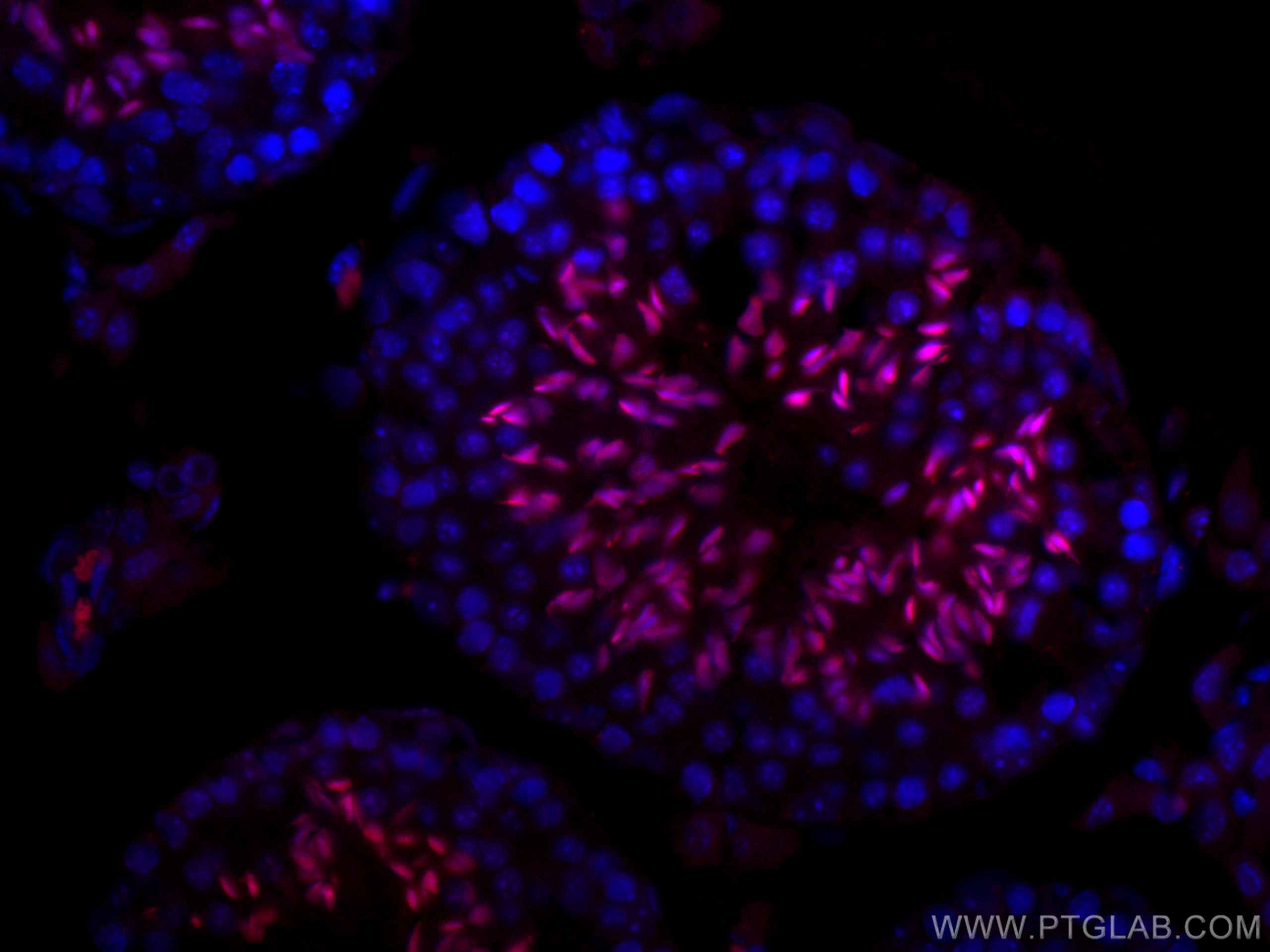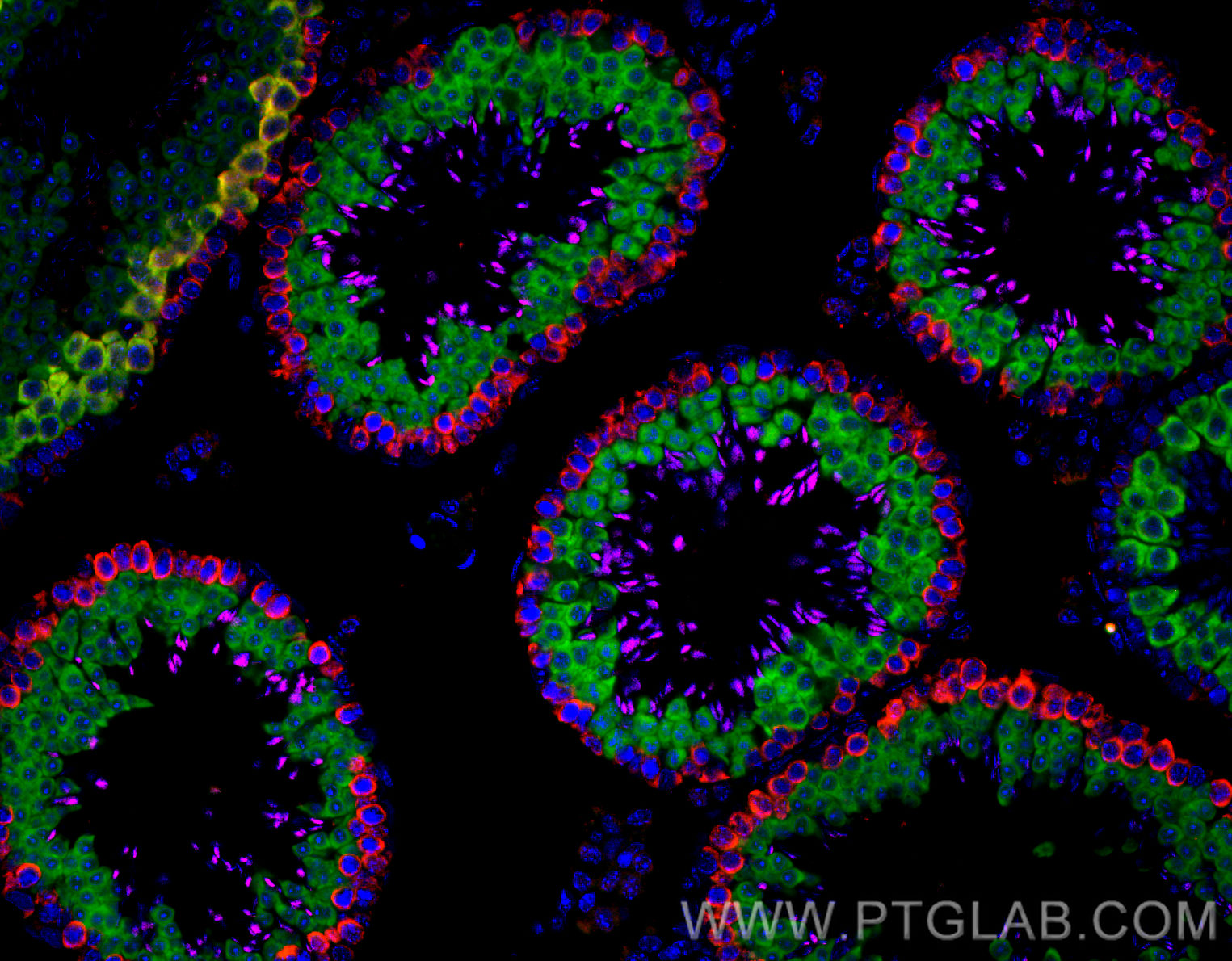验证数据展示
经过测试的应用
| Positive IF-P detected in | mouse testis tissue |
推荐稀释比
| 应用 | 推荐稀释比 |
|---|---|
| Immunofluorescence (IF)-P | IF-P : 1:50-1:500 |
| It is recommended that this reagent should be titrated in each testing system to obtain optimal results. | |
| Sample-dependent, Check data in validation data gallery. | |
产品信息
CL647-17178 targets TNP1 in IF-P applications and shows reactivity with human, mouse, rat samples.
| 经测试应用 | IF-P Application Description |
| 经测试反应性 | human, mouse, rat |
| 免疫原 |
CatNo: Ag10890 Product name: Recombinant human TNP1 protein Source: e coli.-derived, PGEX-4T Tag: GST Domain: 1-55 aa of BC029516 Sequence: MSTSRKLKSHGMRRSKSRSPHKGVKRGGSKRKYRKGNLKSRKRGDDANRNYRSHL 种属同源性预测 |
| 宿主/亚型 | Rabbit / IgG |
| 抗体类别 | Polyclonal |
| 产品类型 | Antibody |
| 全称 | transition protein 1 (during histone to protamine replacement) |
| 别名 | STP 1, TNP1, TP 1, TP1 |
| 计算分子量 | 55 aa, 7 kDa |
| 观测分子量 | 6-10 kDa |
| GenBank蛋白编号 | BC029516 |
| 基因名称 | TNP1 |
| Gene ID (NCBI) | 7141 |
| RRID | AB_2920233 |
| 偶联类型 | CoraLite® Plus 647 Fluorescent Dye |
| 最大激发/发射波长 | 654 nm / 674 nm |
| 形式 | Liquid |
| 纯化方式 | Antigen affinity purification |
| UNIPROT ID | P09430 |
| 储存缓冲液 | PBS with 50% glycerol, 0.05% Proclin300, 0.5% BSA, pH 7.3. |
| 储存条件 | Store at -20°C. Avoid exposure to light. Stable for one year after shipment. Aliquoting is unnecessary for -20oC storage. |
背景介绍
Transition nuclear proteins (TNP1 and TNP2) are the major nuclear proteins that replace somatic histones during spermatogenesis. TNPs are required for normal chromatin condensation and functional sperm development, spermatogenesis was found to be compromised in both Tnp1 and Tnp2 null mice. TNP1, or TP1, localized in nucleus, is a spermatid-specific product of the haploid genome which replaces histone and is itself replaced in the mature sperm by the protamines. Recently, TNP-1 was used as a germ cell marker in condensing spermatids.
实验方案
| Product Specific Protocols | |
|---|---|
| IF protocol for CL Plus 647 TNP1 antibody CL647-17178 | Download protocol |
| Standard Protocols | |
|---|---|
| Click here to view our Standard Protocols |



